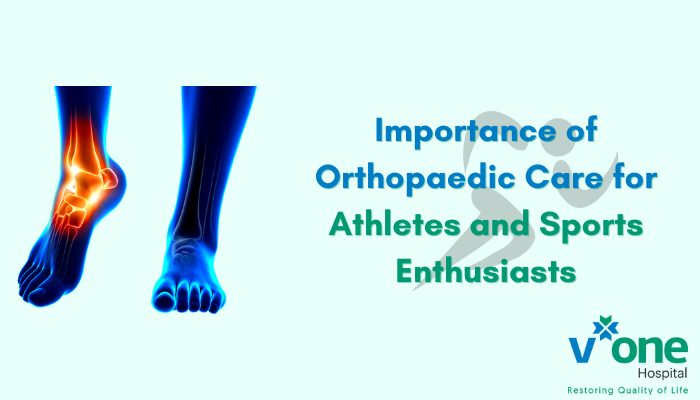Importance of Orthopaedic Care for Athletes and Sports Enthusiasts
Orthopaedic care is an essential aspect of healthcare that is specialized in diagnosing and treating injuries, conditions, and diseases that affect the musculoskeletal system, which comprises bones, muscles, tendons, ligaments, and cartilage. For athletes and sports enthusiasts like you, orthopaedic care focuses on diagnosing and treating sports-related injuries that occur due to physical activity, training, or competitions.
Importance of Orthopaedic Care for Athletes and Sports Enthusiasts
It is impossible for athletes and sports enthusiasts to go through it all and maintain their physical health and performance without ever considering the need for orthopaedic care. Sports-related injuries can be severe and can significantly impact an athlete’s ability to perform their sport, sometimes even causing permanent damage.
Receiving orthopaedic care ensures that athletes receive the appropriate diagnosis, treatment, and rehabilitation, allowing them to return to their sport as soon as possible. Moreover, it helps prevent future injuries and keeps them physically healthy, which is key to their performance in their sport.
Common Sports Injuries
Orthopaedic surgeons are specialized in treating a wide range of sports-related injuries. These injuries can occur in any part of the musculoskeletal system and can range from mild to severe. Some of the most common sports injuries people experience include:
1. Sprains and Strains
Sprains and strains happen when the ligaments, muscles, or tendons are overstretched or torn. These injuries can occur due to sudden movements, falls, or direct impact during sports like basketball, football, soccer, tennis, gymnastics, or even running.
2. Fractures
Fractures happen when a bone is broken or cracked. Fractures can occur due to direct impact, overuse, or sudden movements during sports like basketball, football, hockey, gymnastics, skateboarding, skiing, and snowboarding.
3. Dislocations
Dislocations happen when a bone is forced out of its normal position, and this can happen due to direct impact or sudden movements during sports like gymnastics, wrestling, hockey, soccer, basketball, and football.
4. Tendinitis
Tendinitis occurs when a tendon becomes inflamed due to overuse or repetitive movements. That’s why this is common in athletes who perform repetitive movements, such as when running, swimming, throwing a ball, or playing tennis, golf, volleyball, basketball, baseball, or softball.
5. Bursitis
Bursitis occurs when the bursae (small fluid-filled sacs that cushion the joints) become inflamed. This can happen due to overuse or repetitive movements during sports like tennis, soccer, baseball, softball, cycling, dancing, or golf.
Treatment Options
When seeking orthopaedic care for sports-related injuries, you have various treatment options available to you depending on the severity of the injury. Here are some of the most common treatment options:
1. Physical Therapy
Physical therapy is a form of rehabilitation that involves exercises and stretches to help athletes recover from their injuries. Physical therapy helps improve flexibility, strength, and range of motion.
2. Medication
Medication, such as painkillers, anti-inflammatory drugs, and muscle relaxants, can help manage pain and inflammation associated with sports-related injuries.
3. Surgery
Surgery may be required for severe sports-related injuries, such as fractures and dislocations. Surgery is often necessary to repair the injured area and restore normal function.
4. Braces and Supports
Braces and supports can help provide stability and support to the injured area. These can be used for mild to moderate injuries.
Prevention of Sports Injuries
Even with a multitude of treatment options available, the first attempt should always be to prevent an injury in the first place. This will also help with maintaining the physical health and performance of athletes and sports enthusiasts. Here’s how to effectively prevent being a victim of sports-related injuries:
1. Take Proper Training
Proper training is primarily essential in preventing sports-related injuries. Athletes should ensure that they receive adequate training and instruction on proper techniques and movements to reduce the risk of injury. If you know what you’re doing, you’ll probably be less likely to hurt yourself.
2. Use of Protective Gear
But given that, accidents still happen. Even the best of the best end up hurting themselves- even during the Olympics. But you can prevent a sports injury by using protective gear, such as helmets, knee pads, and wrist guards. Athletes should ensure that they use appropriate protective gear for their sport.
3. Warm-Up and Cool-Down
Warming up and cooling down before and after physical activity are more than just formalities, as they can help reduce the risk of sports-related injuries. While warm-up exercises help prepare your muscles and joints for physical activity, cool-down exercises help prevent muscle soreness and stiffness after.
4. Rest and Recovery
While it’s important to train hard, rest and recovery are just as essential in keeping you healthy and preventing sports-related injuries. Athletes should ensure that they take regular breaks, get adequate rest, and allow their bodies to recover from physical activity.

